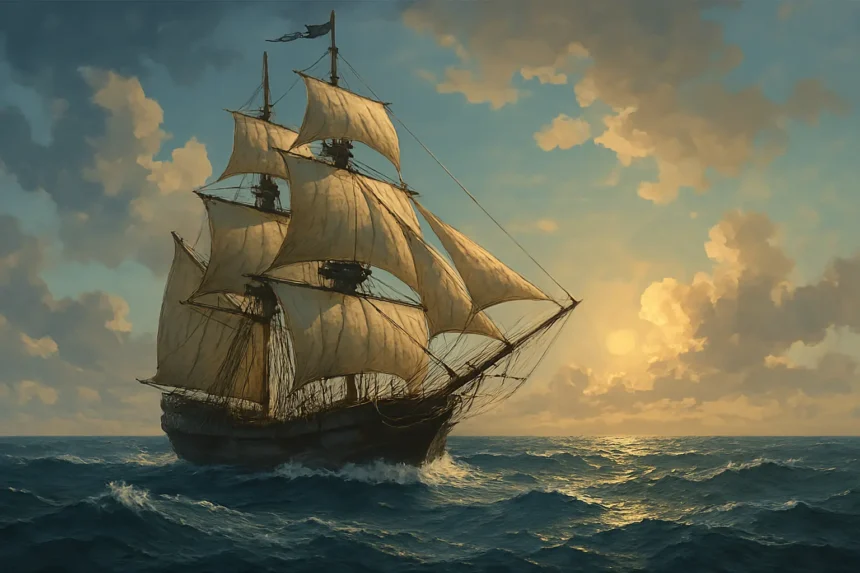Mysterious Seven Seas: Origins and Ancient Beliefs
The phrase “sailing the seven seas” has long been associated with adventure, exploration, and maritime lore. But have you ever wondered what these seven seas actually are? Over time, different cultures have had their own interpretations of the seven seas, shaping the way we perceive the world’s waterways. Today, we take a deep dive into the history, evolution, and modern understanding of the seven seas.
The Origin of “Seven Seas”
Understanding the Mysterious Seven Seas
The concept of the Seven Seas has evolved over centuries, shaped by different cultures, myths, and historical perspectives. From ancient civilizations to modern interpretations, its meaning has shifted, often symbolizing vast and uncharted waters. Below is a structured breakdown of its origins, symbolism, and significance:
| Aspect | Details |
|---|---|
| Origin | Dates back to ancient civilizations. |
| Symbolic Meaning | “Seven” often represented “many” rather than an exact number. |
| Examples | Similar symbolic uses: Seven wonders of the world, seven deadly sins. |
| Earliest References | Found in Middle Eastern cultures, linked to trade and exploration. |
The Seven Seas of Different Civilizations
1. The Persian Seven Seas
Persian literature from ancient times referred to major rivers and their tributaries as the seven seas. These waterways were crucial for trade and travel across Central Asia.
2. The Arabian Seven Seas
For ancient Arabs, the seven seas encompassed the coastal waters from the Persian Gulf to the South China Sea. These routes connected bustling trade hubs and played a pivotal role in early commerce.
3. The Greek Seven Seas
According to Greek records, their seven seas included:
- Aegean Sea
- Adriatic Sea
- Mediterranean Sea
- Black Sea
- Red Sea
- Caspian Sea
- Persian Gulf
Some variations replaced the Aegean Sea with the Indian Ocean, reflecting the Greeks’ growing maritime knowledge.
4. The Medieval European Seven Seas
With the rise of European exploration, the list shifted to include:
- Atlantic Ocean
- Arabian Sea
- Baltic Sea
- Black Sea
- Mediterranean Sea
- North Sea
- Red Sea
This era saw a growing curiosity about the world, prompting explorers to chart distant waters.
5. The Seven Seas During the Age of Exploration
By the 15th and 16th centuries, global navigation expanded, and the seven seas evolved yet again:
- Atlantic Ocean
- Pacific Ocean
- Indian Ocean
- Arctic Ocean
- Mediterranean Sea
- Caribbean Sea
- Gulf of Mexico
This new list reflected the vast oceanic routes that European explorers, such as Columbus and Magellan, navigated.
The Modern Seven Seas: The Seven Oceans
Today, the concept of the seven seas aligns more with what we recognize as the world’s major oceans:
- North Atlantic Ocean
- South Atlantic Ocean
- North Pacific Ocean
- South Pacific Ocean
- Indian Ocean
- Arctic Ocean
- Southern Ocean (Antarctic Ocean)
Unlike earlier versions, modern classification focuses on vast oceanic basins rather than smaller seas.
Why the Seven Seas Still Matter
Although the term “seven seas” has transformed over time, it remains a symbol of exploration and adventure. From early sailors to modern travelers, the idea of journeying across distant waters continues to inspire discovery. Today, these vast waters play a crucial role in trade, climate regulation, and marine biodiversity.
Final Thoughts
While the exact list of the seven seas has changed throughout history, one thing remains constant: humanity’s deep connection to the ocean. Whether through ancient trade routes, legendary pirate tales, or modern maritime exploration, the seven seas continue to shape our world.
Most read: https://tnheadlines24.com/india-crack-aviation-before-the-wright-brothers/
Want to Explore More?
Dive into more fascinating maritime history and adventure stories on our blog! Discover the greatest voyages in history and uncover the secrets of the world’s most mysterious waters.
#MysteriousSevenSeas #SevenSeasHistory #OceanExploration #AncientMaritimeRoutes #SeaLegends #MaritimeMystery #SailingTheSeas #HistoricalOceans #WorldExploration #NauticalAdventure
Disclaimer: The information provided in this article is for general knowledge and informational purposes only. While we strive for accuracy, historical interpretations of the Mysterious Seven Seas may vary across sources and cultures. Readers are encouraged to conduct their own research for a comprehensive understanding.
TN HEADLINES 24 is not responsible for any discrepancies, outdated information, or differing perspectives on the topic. Any reliance on this content is at the reader’s own discretion.

